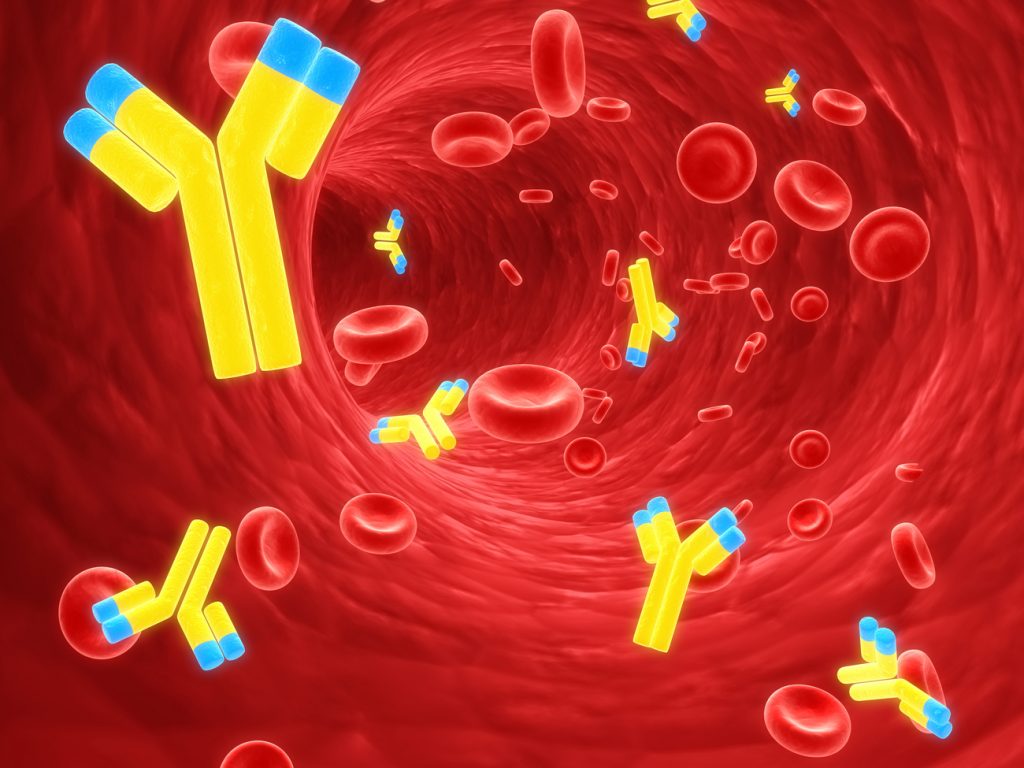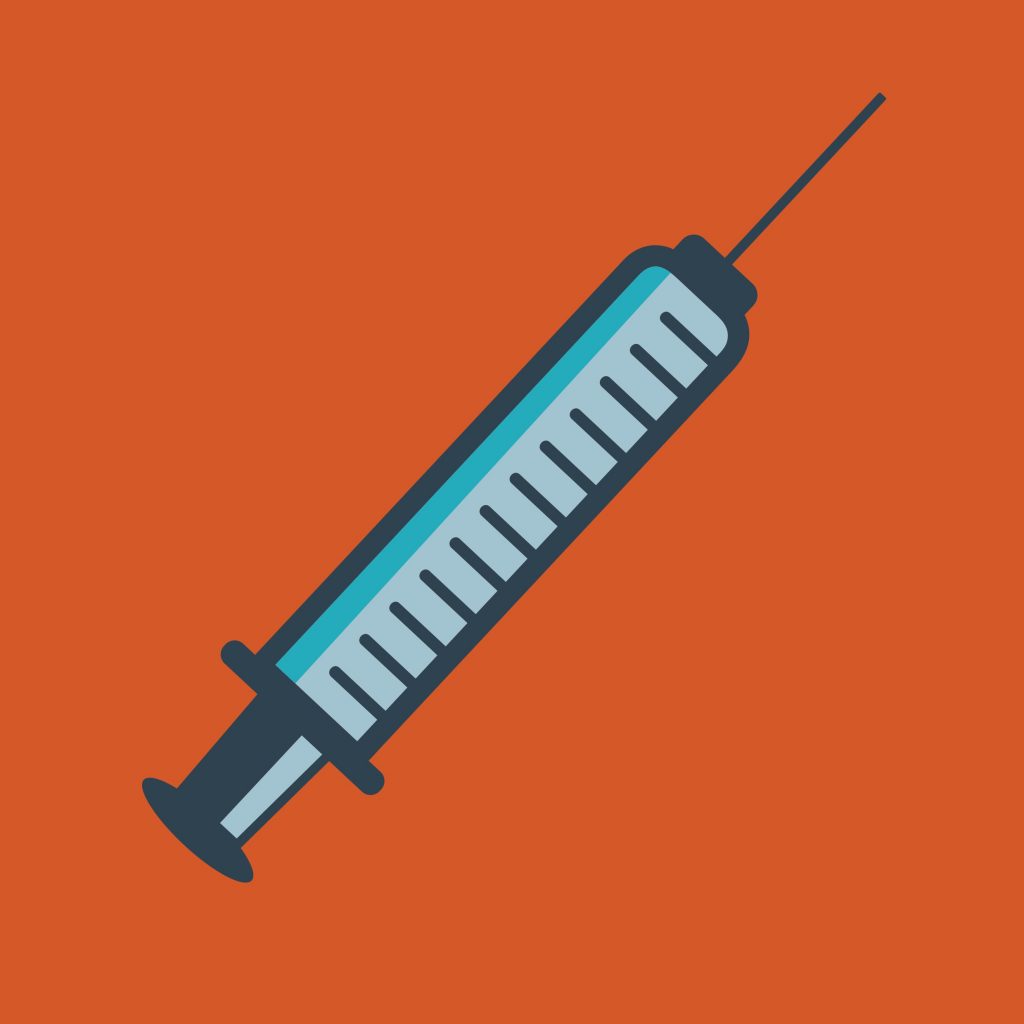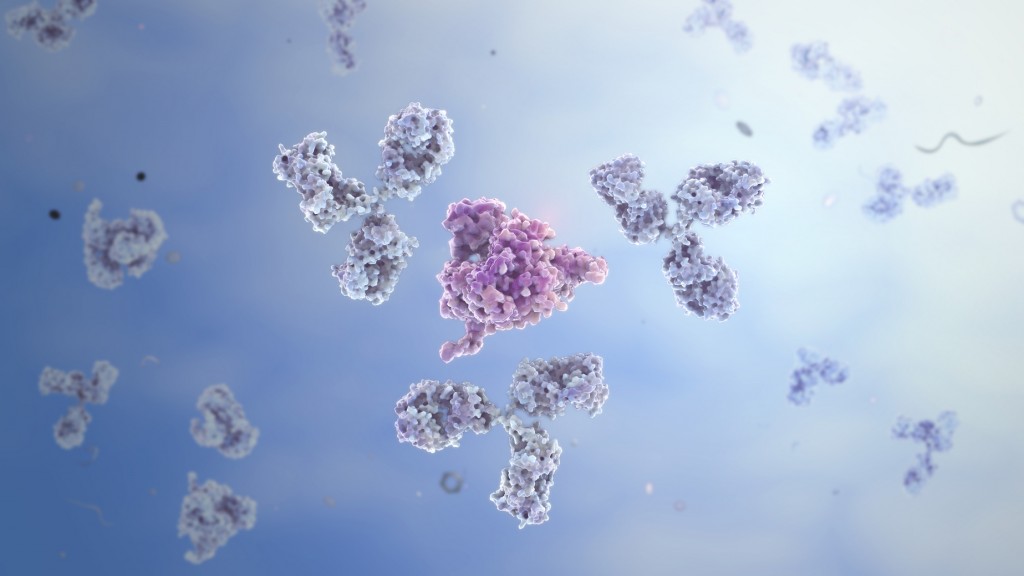HIV Vaccination

New HIV Antibodies Created to Fight Off the Virus
Scientists have made a huge step towards fighting off the HIV virus. Researchers at The Scripps Research Institute (TSRI) were able to attach HIV antibodies to immune cells in their most recent study. These new cells could potentially be the cure that millions infected with the life-threatening disease need. Find out what the scientists at TSRI had to say about their research and how these new cells eliminate the virus from the body.
How Do the HIV Antibodies Work?
Typically, antibodies float in the bloodstream alongside the cells in the body. However, the HIV antibodies developed by the researchers work a little differently. The scientists were able to tether the antibodies to immune cells. This technique created a new population of resistant cells that can replace cells affected by the disease.
This close connection with the immune cells is what Jia Xie, a senior staff scientist at TSRI and first author of the study, called the “neighbor effect.” Essentially, the antibodies hang on to a cell’s surface, acting as a barrier between HIV and the cell’s receptor. This action prevents HIV from infecting the cells and spreading throughout the body.
“This protection would be long term,” said Jia Xie. “You don’t need to have so many molecules on one cell to be effective,” he said.
How Was the Test Preformed?
Xie and his researchers first tested the tethering system against the rhinovirus, which is otherwise known as the common cold. The researchers were able to apply a new gene to cultured human cells. This gene is the one responsible for the creation of the antibodies that attached to immune cells.
The antibodies protected the cell receptors from the virus, halting infection. When adding rhinovirus to the testing, many of the unprotected cells died off. However, the newly created antibodies were able to thrive as the number of cell populations recovered to almost normal levels.
The next step after this success was to test the antibodies against HIV. The goal was for the HIV antibodies to protect the CD4 cells, which are usually the target of HIV. In the end, an HIV-resistant population of cells grew, while the old cells died. This is exactly the type of success that the team at TSRI was looking for.
What This Means for the Future
Antiretroviral drugs are the primary defense against HIV. The problem with this type of medication is that they have to be taken daily. Sometimes, HIV-positive individuals still suffer from higher rates of diseases when taking the drugs.
When discussing the TSRI’s research and new techniques, Joseph Alvarnas, M.D., director of Value-Based Analytics at the City of Hope, states “HIV is treatable but not curable–this remains a disease that causes a lot of suffering. That makes the case for why these technologies are so important.”
The research still has a long way to go. Scientists are testing to find out what other parts of the cell the new antibodies can protect. Hopefully, this can lead to a potential cure.

How HIV Vaccine Development Looks in 2017
The new year looks to be a big one for HIV vaccine development. 2016 gave the HIV research community plenty to be optimistic about. A lot of tiny advancements were made. And when it comes to HIV, each tiny advancement is considered a huge win for those looking for a cure. Multiple encouraging trials took place last year. And researchers are looking to continue that momentum.
It’s helpful to keep up with the latest in HIV vaccine development. These small wins are cause for some hopeful celebration. With that in mind, here are a few of the most encouraging advancements around the world set to continue in 2017.
What’s Happening in HIV Vaccine Development in 2017
- Scientists in London have worked on a more radical vaccine that hasn’t been tried before. The vaccine is called the SAV001 vaccine. And it uses a killed whole virus as a way to get a response from the immune system. Diseases such as hepatitis A, polio, and rabies were treated this way. But never with HIV. In Canada, scientists recently used this in a trial for 33 HIV-positive patients. It was successful. Now they plan on testing 600 people who do not have HIV. This will test the vaccine’s ability to prevent the infection. The new trials for that study are due by September.
- South Africa has embarked on a study with 5,400 sexually-active men and women ages 18-35. This is only the seventh full-scale trial to take place for HIV. The vaccine being used in South Africa is similar to the one tested in Thailand that started back in 2003. The rate of infection was 31% lower than the group that got the placebo in the Thailand study. So, South Africa is looking to get that number up to 60%.
- Another vaccine is set to start this year in California. It’s inspired by the International AIDS Vaccine Initiative, Scripps, and La Jolla Institute. Unlike the other vaccines, this one is not expected to defeat HIV by itself. But it expects to build on specific immune cells that nearly all humans have. The vaccine’s goal is to generate those cells fast enough to stop the virus in its tracks.
As you can see, many vaccines are in the work to get rid of HIV once and for all. 2017 has a lot of promising studies in the works. And in the upcoming years, we’re bound to see more progress.

Using Antibodies in an Attempt to Find a Vaccine
The human immune system is a fascinating network capable of performing incredible feats. Even when HIV is involved, nearly one-third of individuals are capable of producing effective antibodies against the virus. Researchers have turned their attention to the antibodies produced during infection in order to facilitate the creation of an effective vaccine.
While some immune systems are adept at producing antibodies that act to neutralize a broad range of HIV strains, the process could, and often does, take up to a year before it is in full swing. Ideally, a vaccine should help a patient immediately combat the viral intrusion. This is one important goal for those developing vaccines. Efforts to speed up the process and make the antibodies available for everyone has prompted scientific study.
Certain effective antibodies were selected and closely examined. Of those, some had loop-like structures which, when they encountered the virus, were able to cling tightly and neutralize it. With the aid of computer modeling, modifications were made to the existing antibodies so as to maximize their efficiency. It is expected that such modifying will help increase the response time of the immune system, even if a person has never previously had contact with HIV.
Amino Acids Within Antibodies
Another aspect that was carefully reviewed was how the amino acids were sequenced in the antibodies that had proven most effective. Of the antibodies with a loop structure, certain ones had specific amino acid sequences that researchers tested and noted. A successful vaccine needs to provide adequate protection against more than just one or two strains of the tenacious virus. Those that were able to neutralize more strains were again plugged into the computer and modified. The re-engineering was to increase the capabilities of these powerhouse molecules.
Tests were also conducted to confirm that the alterations being made would, in fact, prove effective. The spectrum that the vaccine is designed to cover is wide, and when factoring in the potency of the design, researchers feel confident that if implemented, most people who are vaccinated would produce an effective response.
HIV Protein Image May Be the Next Step Toward a Vaccine
A boost to the war against HIV would be to produce an effective vaccine. Over the decades, research has continued to provide promising strategies for disengaging the viral attack on a host. However, much of this research comes to a halt when it comes time to implement the information. The reason for this standstill has to do with the actual physical makeup of the virus. Creating an antibody has proven not to be out of the scientists’ reach, but getting that antibody to stick to the virus has.
Next Step Toward a Vaccine
In order to neutralize the invading virus, the antibody must attach itself. HIV is so well protected that this has proven futile. In an effort to see vulnerabilities in the viral membrane, researchers have tried to get a closer look at some of the external parts that are attached to the membrane. For years, this also seemed out of reach. Many of the proteins that are attached to the virus are delicate and unstable. Attempts at capturing the image resulted in breaking the structure because of its fragile nature. This losing streak, though, just came to an end. Finally, a high-resolution image of a key protein on the outside of the viral wall has been taken. Now, scientists will be able to study the segment and see what approach to take so that antibodies can adequately attach themselves.
This protein is not only a vulnerable part of the virus, but it also happens to be very consistent among various strands of HIV. In other words, it does not mutate as much as other structures. This means that when a vaccine is produced with antibodies that can attach to this protein, it should be able to cover a vast array of HIV infections. There will be no need for multiple vaccines. Also discovered is that while this would be an ideal site to neutralize the virus, there is a shield around it. This sugar-like substance conceals the area and will make contact difficult for antibodies. Taking a closer look at these molecules will help researchers break down the defense so that the immune system can do its job.
Understanding Antibodies
Understanding Antibodies: The Next Step in HIV Vaccine Research
Researchers are looking at certain antibodies that seem to prevent the infection of HIV. They recognize the need to know what kind of response they need to trigger with a vaccine to make it the most effective. Understanding antibodies may be the next step in HIV vaccine research.
Based on past studies, many scientists have thought if the V1V2 regions of HIV were removed, the virus would be more susceptible to attacks by the body’s immune system, i.e. immunoglobulins, or antibodies, thus decreasing the viral load in the body. New studies, however, are finding that there is only one type of these immunoglobulins, IgG3, that can possibly lower the risk of infection by triggering an antiviral response.
Another study found that immunoglobulin G3, when used in vaccines, was involved in the HIV elimination process. Researchers found that the number of the antibody V1V2- IgG3 in the blood of the patient who had received the vaccine went down. The efficiency of the vaccines tested in this trial also went down by almost 50 percent over a three-and-a-half year period. To sum, this particular study showed that the vaccine scientists dubbed RV144 had some antibodies that could coordinate more than one organized process to get rid of HIV. These processes came mostly through the V1V2-IgG3 antibodies.
Further research is required to truly test the effectiveness of IgG3 antibodies in preventing HIV infection. Scientists also want to uncover the connection between the rapid decline in the amount of IgG3 and the efficiency of the trial vaccine. Understanding antibodies may unlock the key to discovering an effective HIV vaccine to eliminate the virus by building on the foundation laid by the success or failure of the previous test.



